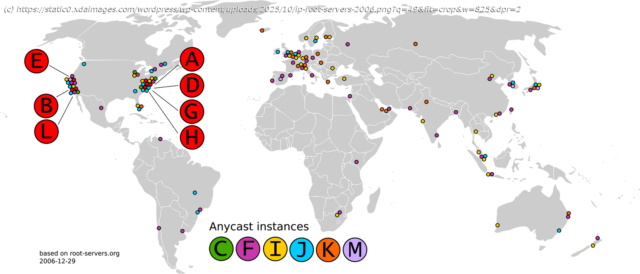Chinese researchers once built „IPv9.“ It was never internationally recognized, but it raised important questions.
In the early 2000s, the alarm bells had already been sounded for approximately a decade that IPv4 addresses were running out. Its 4.3 billion possible addresses, considered unimaginably large, suddenly looked very finite, and the standardization of IPv6 was a process undergone from the mid 1990s up until its publication in 1998. Yet just a few years later, in the mid 2000s, rumors circulated that China was working on IPv9. The problem, though, was that no international body recognized it, and it seemed drastically different from the rest of the wider internet.
However, it wasn’t just the lack of recognition that caused problems. Back in 1994, on April Fool’s Day, an IETF request for comment (RFC) numbered 1606 was published, titled „A Historical Perspective On The Usage Of IP Version 9.“ Reports of China’s IPv9 caused a lot of confusion, as while people were aware of the IPv9 April Fool’s joke, they also initially thought that it was merely a reference to that same joke a decade later. As an aside, it’s an incredibly detailed memo for an April Fool’s Joke, with my personal favorite part part being the following:
This confusion was shared by Vint Cerf, often regarded as one of „the fathers of the internet.“ In an email sent to figures within the Chinese internet community, he wrote the following:
Nearly two decades later, there’s now a much clearer picture of what happened at the time and what IPv9 was and was not.
The brief history of IPv9
IPv9 was technically assigned before
When we talk about IP versions in conversation, the only two that really ever come up are IPv4 and IPv6. IPv5 was an experimental streaming protocol that basically ended up rolled into the rest of IPv4, but there was an experimental version 9 assignment dubbed „TUBA.“ Outlined in RFC 1347, TUBA stood for TCP and UDP with Bigger Addresses, though it was quickly abandoned as the IETF shifted focus to IPv6 instead. Enter Chinese engineer Xie Jianping in the late 1990s, who wanted to explore those initial ideas with a homegrown approach at the Institute of Chemical Engineering in Shanghai.
In September 2001, China formally set up the Decimal Network Standard Working Group, appointing Xie Jianping as its head. The mandate was to develop an internet protocol with independent Chinese intellectual property, including an IPv9 address format and a numeric domain name system. By 2003, Chinese researchers had filed initial patents related to IPv9, such as a “new generation IPv9 protocol router” (CN2591884Y) and methods for allocating addresses using a fully decimal algorithm. It was clearly taking some technical shape by this stage, and international researchers caught wind of it in 2004 following the announcement that „IPv9 had been formally
adapted and popularized into the civil and commercial sectors.“
However, Cerf’s email to Chinese internet leaders saw a response that yielded some clues about what exactly was going on. Professor Hualin Qian of the Computer Network Information Center of the Chinese Academy of Sciences described IPv9 as a research project that turned out to have serious practical shortcomings and little support, according to reports at the time. Hualin further stated that network experts from Fudan University, Shanghai, „do not know any deployment of IPv9 in Shanghai.“ Despite this response, August 2007 saw the Ministry of Information Industry define IPv9 as the „new generation internet.“
IPv9 was met with skepticism from both researchers and engineers in China and in the west. Xie Jianping, in an effort to protect his reputation, sued a journalist over criticism that was later judged to be defamatory in nature, given that it quoted social media users who insulted Xie Jianping’s character.






